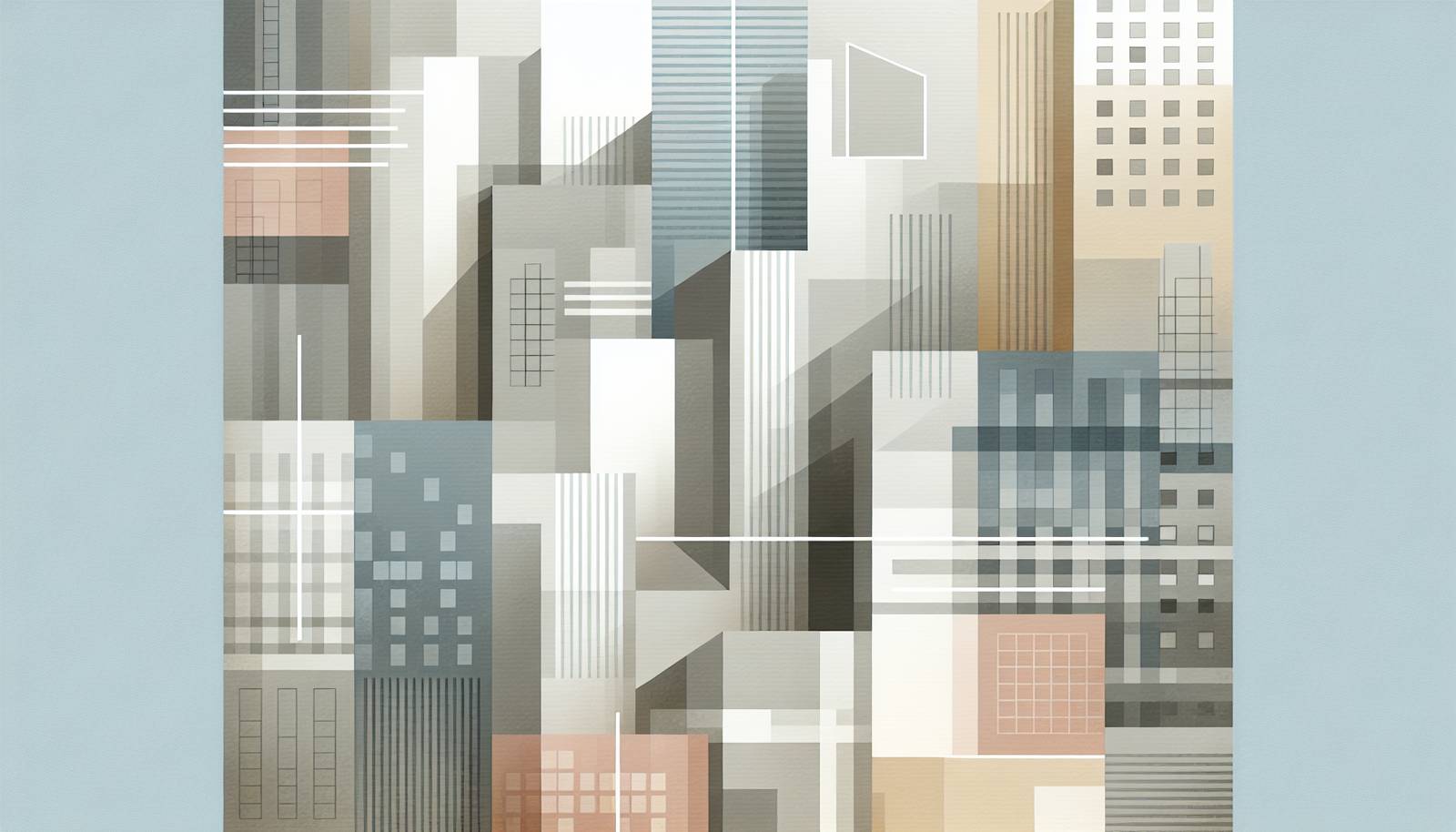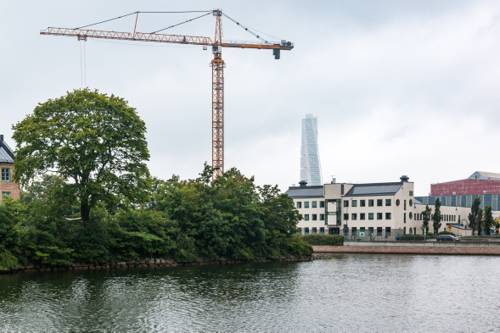
FAQ About The Influence of Postmodern Art on Urban Environments

What is postmodern art?
Postmodern art is an artistic movement that emerged in the mid-20th century as a reaction against the principles and practices of modernism. It is characterized by its eclectic approach, mixing various styles and media, and often blurring the boundaries between high art and popular culture. Postmodern art is known for its playful, ironic, and skeptical attitude, challenging established conventions and narratives in art.

How does postmodern art influence urban environments?
Postmodern art influences urban environments by impacting the aesthetic and cultural dynamics of cities. Through public art installations, unconventional building designs, and interactive spaces, it reshapes cityscapes and contributes to a distinctive urban identity. This influence often makes cities more vibrant, encourages cultural dialogue, and promotes diversity and creativity within urban settings.

What are some examples of postmodern art in urban spaces?
Examples of postmodern art in urban spaces include the Guggenheim Museum in Bilbao, Spain, designed by Frank Gehry, which exemplifies an unconventional architectural form. Street art and murals found in cities like Berlin, New York, and London also reflect postmodern characteristics, often combining political messages with artistic expression. Additionally, interactive installations in public parks and plazas allow communities to engage with art in a unique way.

How has postmodern architecture changed city landscapes?
Postmodern architecture has changed city landscapes by introducing diverse and bold architectural styles that often defy traditional design principles. Buildings may incorporate historical references, eclectic motifs, or unusual shapes and colors, contributing to a visually dynamic and sometimes controversial urban fabric. This transformation often encourages debate about aesthetic values and the role of architecture in society.

What role does irony play in postmodern urban art?
Irony in postmodern urban art serves to challenge viewers' perceptions and critique societal norms. By using irony, artists create works that provoke thought and often reveal contradictions in cultural, political, or social contexts. This approach encourages the public to question conventional narratives and engage in reflective dialogue about the nature of art and culture in their urban environment.

How does postmodern art address identity and diversity in cities?
Postmodern art addresses identity and diversity by embracing multiculturalism and multiple viewpoints in its expression. Urban art projects often highlight marginalized voices and encourage inclusivity, reflecting the diverse makeup of city populations. By doing so, postmodern art fosters a sense of belonging and representation, allowing urban environments to celebrate their unique cultural mosaics.

What impact does postmodern art have on urban tourism?
Postmodern art significantly impacts urban tourism by attracting visitors who are interested in experiencing unique and innovative art forms. Cities known for their postmodern architecture, such as the Louvre Pyramid in Paris or the Sydney Opera House, become cultural landmarks, drawing tourists seeking aesthetic inspiration and cultural enrichment. This can lead to economic benefits for cities through increased tourism revenue and international recognition.

In what ways does postmodern art contribute to urban regeneration?
Postmodern art contributes to urban regeneration by revitalizing neglected or underused urban areas. Through public art installations, creative hubs, and artist-led initiatives, spaces can be transformed into vibrant cultural districts, fostering economic development and community engagement. This process not only beautifies urban environments but also encourages a renewed sense of place and purpose among residents.

How are public spaces transformed by postmodern art?
Public spaces are transformed by postmodern art through the introduction of innovative design elements and engaging art forms. Installations and artworks invite interaction and participation from the public, making spaces more accessible and inclusive. This transformation often enhances the aesthetic appeal of urban areas, creating environments where people can gather, socialize, and experience art in everyday life.

What is the relationship between postmodern art and technology in urban settings?
Postmodern art often incorporates technology to create interactive and immersive experiences in urban settings. Artists use digital media, video projections, and interactive installations to engage spectators in new ways. This synergy between art and technology facilitates innovative expressions and transforms the understanding and function of public spaces, making art more accessible and engaging to urban audiences.

Can postmodern art influence urban planning and design policies?
Yes, postmodern art can influence urban planning and design policies by encouraging flexible and dynamic approaches to city development. By prioritizing creativity and diverse expressions, postmodern principles can lead to more inclusive and experimental urban landscapes. Policymakers may incorporate artistic insights into planning processes to enhance community well-being, aesthetic appeal, and cultural vibrancy in urban environments.

How does postmodern art challenge traditional notions of public art?
Postmodern art challenges traditional notions of public art by rejecting linear narratives and embracing ambiguity and eclecticism. It often blurs the lines between artist and audience, encouraging participatory and interactive experiences. This approach redefines what public art can be, widening the scope of artistic expression and inviting new interpretations and connections with the community.

What cultural themes are commonly explored in postmodern urban art?
Common cultural themes in postmodern urban art include identity, politics, consumerism, and the impact of globalization. Artists often explore these themes through unconventional mediums and playful, ironic methods. By doing so, they aim to provoke dialogue and reflection on important societal issues, influencing public perception and understanding of these topics in the context of their urban environments.

Are there any criticisms of postmodern art's influence on urban environments?
Postmodern art's influence on urban environments is sometimes criticized for prioritizing aesthetics over functionality, resulting in impractical or controversial structures. Additionally, the eclectic nature of postmodern art can lead to visual dissonance in cityscapes, which some argue detracts from historical cohesion. Critics also point out that while postmodern art promotes cultural dialogue, it may also contribute to gentrification and displacement in communities.

How do postmodern art installations affect community engagement in cities?
Postmodern art installations often foster community engagement by transforming urban spaces into active cultural sites. They encourage local participation and dialogue, making art accessible to a broader audience. By involving communities in the creation and interaction with art, these installations can enhance civic pride, strengthen neighborhood ties, and promote social cohesion.

How does postmodern art impact the perception of historic architecture in urban areas?
Postmodern art impacts the perception of historic architecture by juxtaposing contemporary artistic expressions with traditional forms. This contrast can renew interest in historical structures, encouraging preservation and reinterpretation. While it may challenge conventional aesthetic norms, this interaction often leads to a richer understanding and appreciation of a city's architectural heritage, blending past and present narratives.

What role do artists play in shaping postmodern urban environments?
Artists play a crucial role in shaping postmodern urban environments by challenging conventional aesthetics and introducing innovative concepts. Through collaborations with architects, urban planners, and community members, artists contribute unique perspectives that influence the design and character of urban spaces. Their creative input often leads to more vibrant, inclusive, and culturally rich environments that reflect the diversity and dynamics of modern cities.

How does postmodern art interact with environmental concerns in urban design?
Postmodern art often engages with environmental concerns by incorporating sustainable practices and eco-conscious themes into its creations. Artists may use recycled materials, highlight ecological issues through public installations, or collaborate on green architecture projects. By doing so, postmodern art raises awareness about environmental challenges and encourages cities to integrate ecological responsibility into their urban development strategies.

What is the future of postmodern art in urban environments?
The future of postmodern art in urban environments is likely to continue evolving as cities embrace more diversified and inclusive artistic expressions. As technology and globalization further influence urban landscapes, postmodern art will adapt to address new social, cultural, and environmental challenges. This evolution will likely lead to more integrated and collaborative art practices that reflect the complexities and interconnections of global urban life.

How does postmodern art influence the social dynamics of urban areas?
Postmodern art influences the social dynamics of urban areas by prompting social interaction and community dialogue. Through public art projects and participatory installations, it breaks down social barriers, fosters inclusivity, and reinforces a sense of community belonging. This influence encourages diverse interactions and helps create more cohesive and engaged urban communities.
